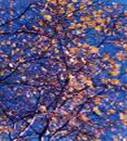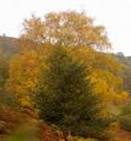| Kingdom | Plantae |
| Division | Magnoliophyta |
| Class | Magnoliopsida |
| Order | Fagales |
| Family | Betulaceae |
| Genus | Betula |
| Species | B.pendula |
| Binomial name | Betula pendula |
Other Common Names:
The other common names for the tree birch are Black Birch, Cherry Birch, Downy Birch, European White Birch, Silver Birch, White Birch, Grey Birch, Paper Birch, Yellow Birch, Himalayan Silver Birch, Indian Paper Birch, Beithe, Bereza, Berke, Beth, Bouleau, Lady of the Woods, Monoecia, Pioneer Tree and Tree of Birth.
History
The very name Birch, in its identity with "bark," "barque," or "barge," suggests the time when its silver rind formed the canoes of our early British ancestors, such as have been found buried in the gravels of the banks of the Clyde. The stem. of the Silver Birch is one of the masterpieces of Nature.


Description
A popular deciduous tree with heart shaped foilage that turns golden in autumn. Smooth silvery white trunk and branches. The genus contains about 60 species of deciduous trees and shrubs and is distributed throughout the northern hemisphere. It has drooping branches and peeling bark and grows about 10 - 25 meters in height. Birch is remarkable for its lightness, grace, and elegance, and after rain it has a fragrant odour.



Range
Birch is widely distributed in Europe, from Sicily to Iceland and also in Northern Asia. Thus it is found in most of Europe, including Britain, south and east to Morocco, W. Siberia and central Asia.
Habitat
Birch thrives best in full sun and grows in a wide range of soils. Ascending to an altitude of 4,200 m. Birch forests occur on open exposed tracts which are under snow throughout the greater part of winter.
Cultivation
The soil should be well drained and enriched with compost and decayed manure. Water generously in warmer climate gardens. The tree may be grown in larger gardens, but because of its shallow roots it should be at least 6 m away from any building; it is also susceptible to severe droughts for the same reason. Silver birch is found in woodlands throughout the whole northern hemisphere. Harvesting the buds in March, the leaves in April-May, the bark and the sap also in spring. The sap is obtained by boring holes into the trunk and tapping the flow through a pipe into a vessel for up to 2 days, preserving the fluid with alcohol. Seed are best sown as soon as it is ripe in a light position in a cold frame. Only just cover the seed and place the pot in a sunny position. Spring sown seed should be surface sown in a sunny position in a cold frame. If the germination is poor, raising the temperature by covering the seed with glass can help. When they are large enough to handle, prick the seedlings out into individual pots and grow them on in a cold frame for at least their first winter. Plant them out into their permanent positions in late spring or early summer, after the last expected frosts. If you have sufficient seed, it can be sown in an outdoor seedbed, either as soon as it is ripe or in the early spring - do not cover the spring sown seed. Grow the plants on in the seedbed for 2 years before planting them out into their permanent positions in the winter
Flowering Season
The flowers of the birch tree are in bloom from May through June.
Pests and Diseases
This tree is, however, peculiarly liable to the disease known as "Witch Knots," or "Witches' Brooms," a confused mass of short twigs, like an old rook's nest, produced by a very minute gall-mite, Phytoptus, which attacks the young buds. It is desirable to burn all parts so affected, as the mites will otherwise be carried from tree to tree by wind or birds.
Parts Used

The leaves and bark of the birch tree are most commonly used for its commercial and medicinal purposes and the sap is of major commercial importance in herbal cosmetics.
Medicinal Applications

• Birch tar oil resembles oil of Cade in its properties, and is used for external application in the form of ointment or soap for eczema, psoriasis, and other skin affections.
• Mixed with other essential oils it is used to keep away mosquitoes.
• The crude tar from Birch is used in pharmaceutical preparations for dermatological diseases.
• Its leaves treated excessive water retention. For dietary purposes, the bark was used in flour due to its sweet taste and the sap in drinks.
• The sap, rich in trace elements and minerals, nutritional elements necessary for the skin, is extracted from the bark. It helps to combat skin sagging and helps reinvigorate the skin.
• It was used internally and externally for a wide array of aches and pains.
• It was especially effective against joint pain and urinary tract infections.
• As a topical cream it was used for boils and sores.
• Birch also has a natural methyl salicylate that is used in a wide variety of different sports creams and items for pain relief.
• It is good for rheumatism, osteoarthritis, low back pain, and as a muscle relaxant. It will counteract irritations and can be used as a wound treatment as well.
• The antibacterial leaves give a diuretic tea used to treat gout and rheumatism, to dissolve kidney and bladder tones and to lower cholesterol.
• Birch sap was used in the spring as prepared as tea and is considered a vitamin treat as a tonic for anaemia, gout, scurvy, and rheumatism.
• Birch charcoal was used as an absorbent in cases of poisoning, gas bloating and indigestion.
• Traditionally the Birch is appropriate in treatment of diarrhoea, dysentery, cholera, and all maladies of the alimentary tract.
Commercial Applications



• A birch twig or birch twigs is used for flogging.
• The twigs of the common European birch being tough and slender were formerly much used for rods in schools. They were also made into brooms.
• The sap is fermented to make beer, wine, spirits and vinegar.
• An oil obtained from the bark of the common European birch, and used in the preparation of genuine Russia leather, to which it gives its peculiar odour.
• Europe, is used for many humble purposes, such as bobbins for thread mills, herring-barrel staves, broom handles, and various fancy articles.
• In country districts the Birch has very many uses, the lighter twigs being employed for thatching and wattles.
• The twigs are also used in the manufacture of cloth.
• The tree has also been one of the sources from which asphyxiating gases have been manufactured, and its charcoal is much used for gunpowder.

'Kalidasa' mentions it in his dramas and ethics. The use of this bark was discontinued by Akbar, the Moghul Emperor, who introduced the manufacture of paper. The birch is, moreover, the first tree in the Celtic calendar - a symbol for the period from 24 December to 20 January. The Celts also honoured the tree on 24 June, three days following the summer solstice. This was as important a date as 24 December, which marked the third day following the winter solstice. In German folklore, the birch is regarded as a tree of life; this is reflected in the tradition of the maypole. In the 14th century, a pleasant-tasting 'birch wine' or 'birch beer' was made from the fermented sap of tapped birch trees.
Birch, Betula Alba, also known as The Lady of the Woods, and Tree of Life, is the first tree in the Celtic Tree calendar as Beth the Birch. It is one of the few trees to have a rune, or letter symbol, associated with it. It is the rune of birth, mothers and children, and it has the qualities of secretiveness, and protection. Remember the old scare tactic when we were a child? If you are bad...Santa will bring a bag of sticks! Those "sticks" were Birch twigs and that tale related back to the time of Saint Nicolas.
The Norse associated the Birch tree with the god Thor, and a Birch planted close to your home would ward off the "evil eye", lightening and infertility. A circle of Birch Trees is among the most Magical of sites in the sacred woodlands. Birch parchment (taken correctly) is used for Magical writings. Birch may be used to banish negative energy, and provide protection. Celtic lore suggests the trimming of nine woods taken at Candlemas for the Beltaine fires. The original nine are Birch, Oak, Fir, Willow, Rowan (Mountain Ash), Apple, Grape vine, Hazel, and Hawthorne. Use Birch for your besom.
Working with Birch may invoke the Goddess Aino, whose blood gave birth to the waters of the world. Through her we might better understand elemental water. The birch has been of great significance in both Slavic and Teutonic folk belief since the earliest times. On Walpurgis Night (before May 1), holy Walpurga commands all witches, spirits and demons under her jurisdiction to come to her at Blocksberg Mountain, riding on broomsticks made of birch trees. Birch rods were considered to be life-giving and it was believed that illnesses could be transferred to the birch.